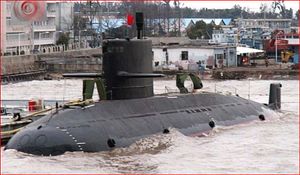The Royal Thai Navy (RTN) will seek Cabinet approval to purchase three Chinese-made Yuan class S26T submarines for 36 billion baht ($1 billion). Thailand’s Deputy Prime Minister and Defense Minister Prawit Wongsuwan confirmed the news in July 2016. The S26T submarines are diesel-powered with a displacement of 2,400-3,000 tonnes and equipped with weapons including torpedoes and sea mines. According to reports, China would also transfer knowledge on the submarine maintenance, systems, and weapons.
This is only one out of many attempts by the RTN to seek approval for submarine purchases. The RTN has been pursuing the purchase of submarines since the 1990s, but has not yet been able to obtain funding approval for submarine purchases because of the cabinet’s concerns over the cost of this purchase relative to the requirements for this capability. In order to convince the Thai public, Prime Minister Prayut Chan-o-Cha had asked the RTN to explain the necessity of the submarine purchases. The RTN then released a nine-page document detailing the reasons for wanting to purchase submarines from China.
Key Reasons for Submarines
First, Thailand’s reliance on maritime trade was highlighted in the document. Thailand’s maritime interests are said to amount to 24 trillion baht ($685 billion) per year. These maritime interests include marine natural resources, marine transport, and downstream industries. The document also added that 15,000 cargo vessels passed through the Gulf of Thailand per year. It is thus crucial to protect this important sea lane of communication. According to the document, if maritime conflicts in the region escalate into war, the entire Gulf of Thailand would be blocked. Having submarines would thus be a good sea-denial strategy.
Since Thailand is a non-claimant to the South China Sea, the conflicts there may not be relevant. Nevertheless, disputes do exist in the Gulf of Thailand over the overlapping maritime areas of Cambodia and Thailand, which are known to contain massive amount of natural gas and oil. That being said, Thailand and Cambodia have taken a more compromising stance over their maritime dispute ever since Prayut came into power in 2014. Thus, it is hard to see that Thailand has a known adversary that warrants the submarine purchases.
Second, the document also emphasized the need to provide maritime security for its littoral and Exclusive Economic Zone (EEZ). This includes counterpiracy and countering illegal trafficking in its territorial waters. Thailand’s geographical location makes it a convenient transit point and destination for human and drug trafficking. In terms of counterpiracy efforts, incidents of piracy and siphoning thefts of fuel are known to occur in the Gulf of Thailand. Nevertheless, the impact of submarines in combating trafficking and piracy is minimal, because submarines are slow while smugglers and pirates are not deterred by an “invisible” threat. Smaller patrol vessels could do the job at a lower cost.
With no clear operational role for the submarines, the RTN’s reason for purchasing submarines may be more associated with keeping up with its neighbors in Southeast Asia. Thailand continues to see itself as a major power in the region, in part because of historical memory. Thailand was one of the founding members of ASEAN, alongside Indonesia, Malaysia, the Philippines, and Singapore. However, in terms of its naval capability, the RTN is lagging behind neighboring countries like Singapore, Vietnam, and Indonesia. The Thai 2008 defense white paper specifically points to the imperative need for the armed forces to develop its forces and technology at a comparable level to regional countries. Therefore, with countries like Indonesia and Vietnam acquiring Russian Kilos, Thailand does not want to lag behind.
Implications
Even if the RTN wants to catch up with its neighbors, the bigger challenge will be the development of highly-skilled and experienced commanding officers and operators. Notwithstanding the fact that China will be providing training support, the RTN cannot produce either commanding officers with significant submarine experience or operators who can manage the complex systems overnight. Consequently, the RTN will face a situation whereby there is a lack of experience and expertise in the submarine fleet for several years. Given the instable political environment in Thailand, there is also an uncertainty as to whether there will be a sustained motivation by the government to develop operational capacity for submarines. As such, these S26T submarines may see little action as with Thailand’s aircraft carrier, HTMS Chakri Naruebet.
To that end, the S26T submarines will not be an effective use of the government budget. The first of the three submarines will cost approximately 12 billion baht. The funds will come out of the 2017 fiscal budget, which has been set at 2.73 trillion baht. The remaining submarines will be paid for via installment for the next 10 years. It is not prudent to continue paying for a period of 10 years if these submarines end up being inactive before then. While Thailand’s Gross Domestic Product (GDP) expanded by 3.2 percent in the first quarter of 2016, caution still remains about the growth momentum of the country due to political uncertainty. Fiscal spending needs to be carefully managed in an uncertain economic climate. Therefore, the government should give careful consideration before committing to submarine purchases.
Eugene Mark is a Senior Analyst with the Military Studies Programme at Singapore’s S. Rajaratnam School of International Studies, and he holds a master’s degree in international political economy from the same institution. Eugene has a deep interest in defence and political affairs in Thailand.
































